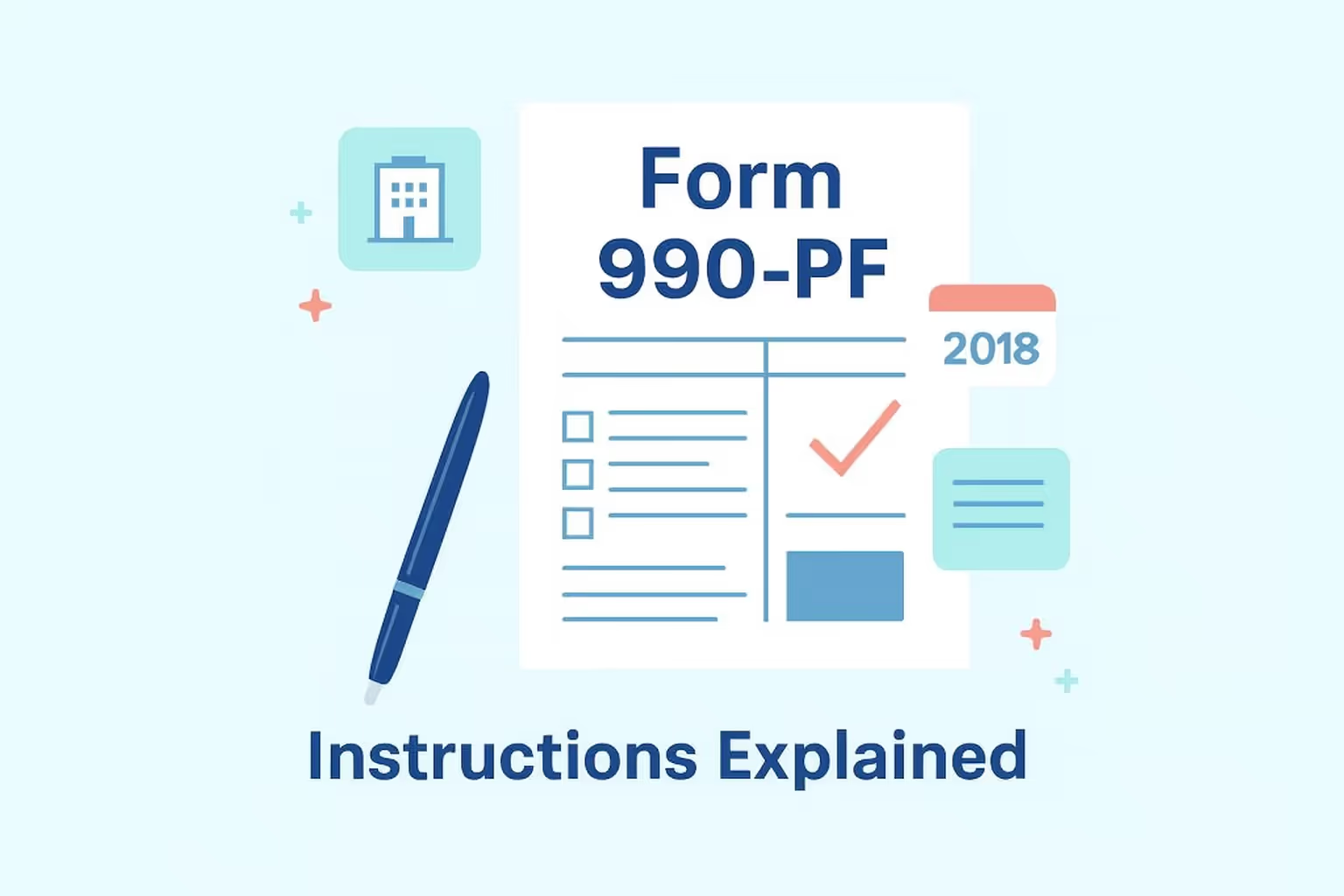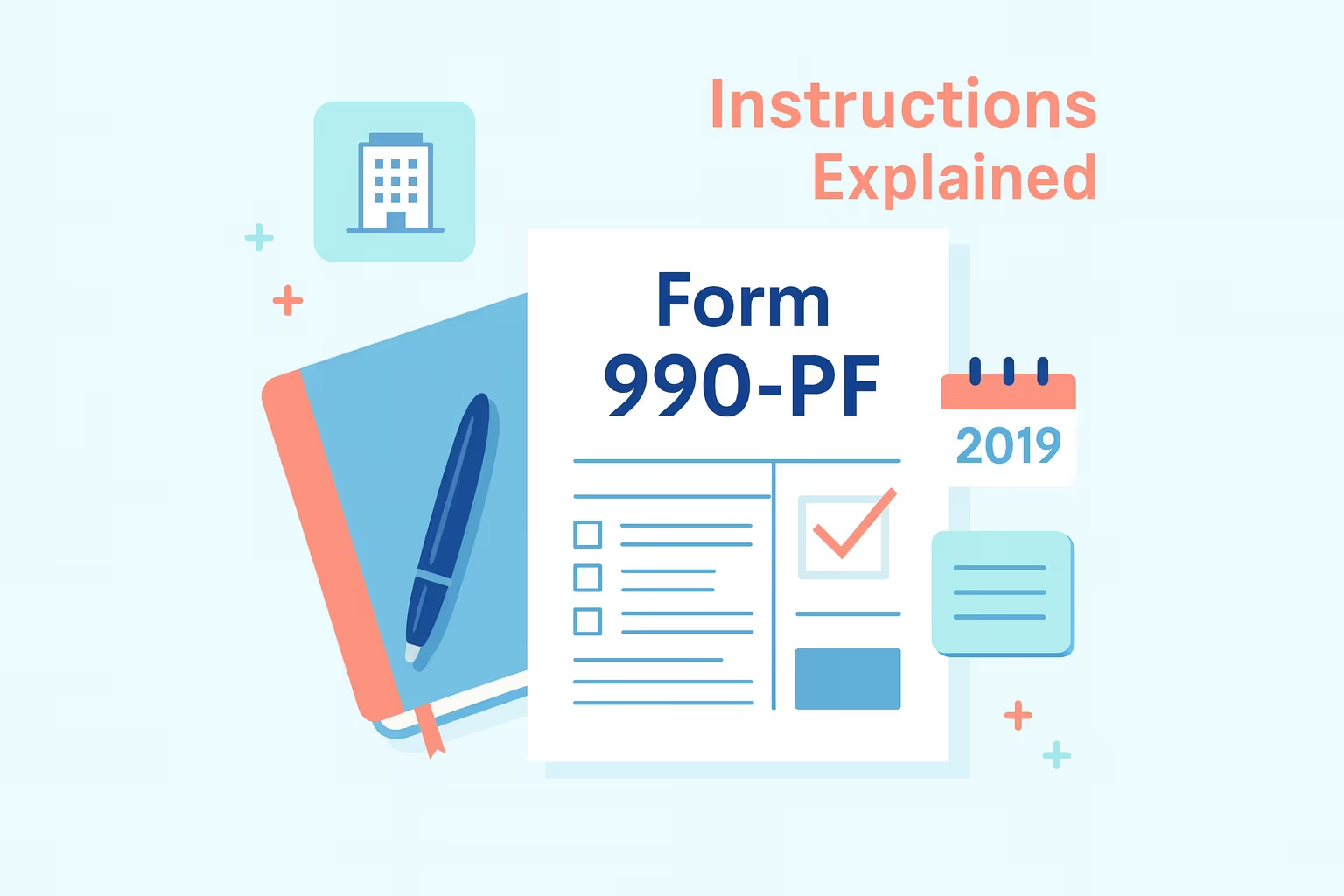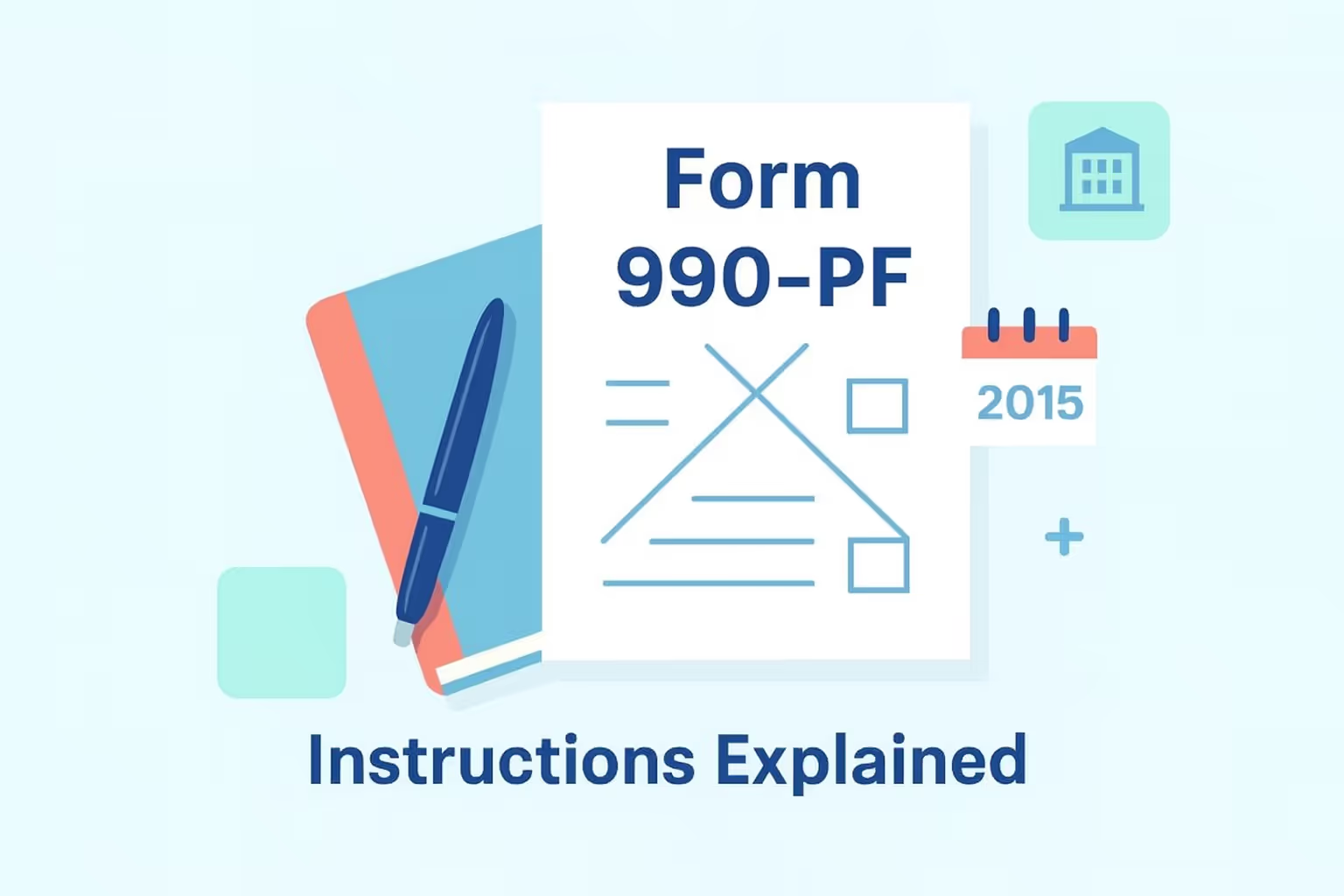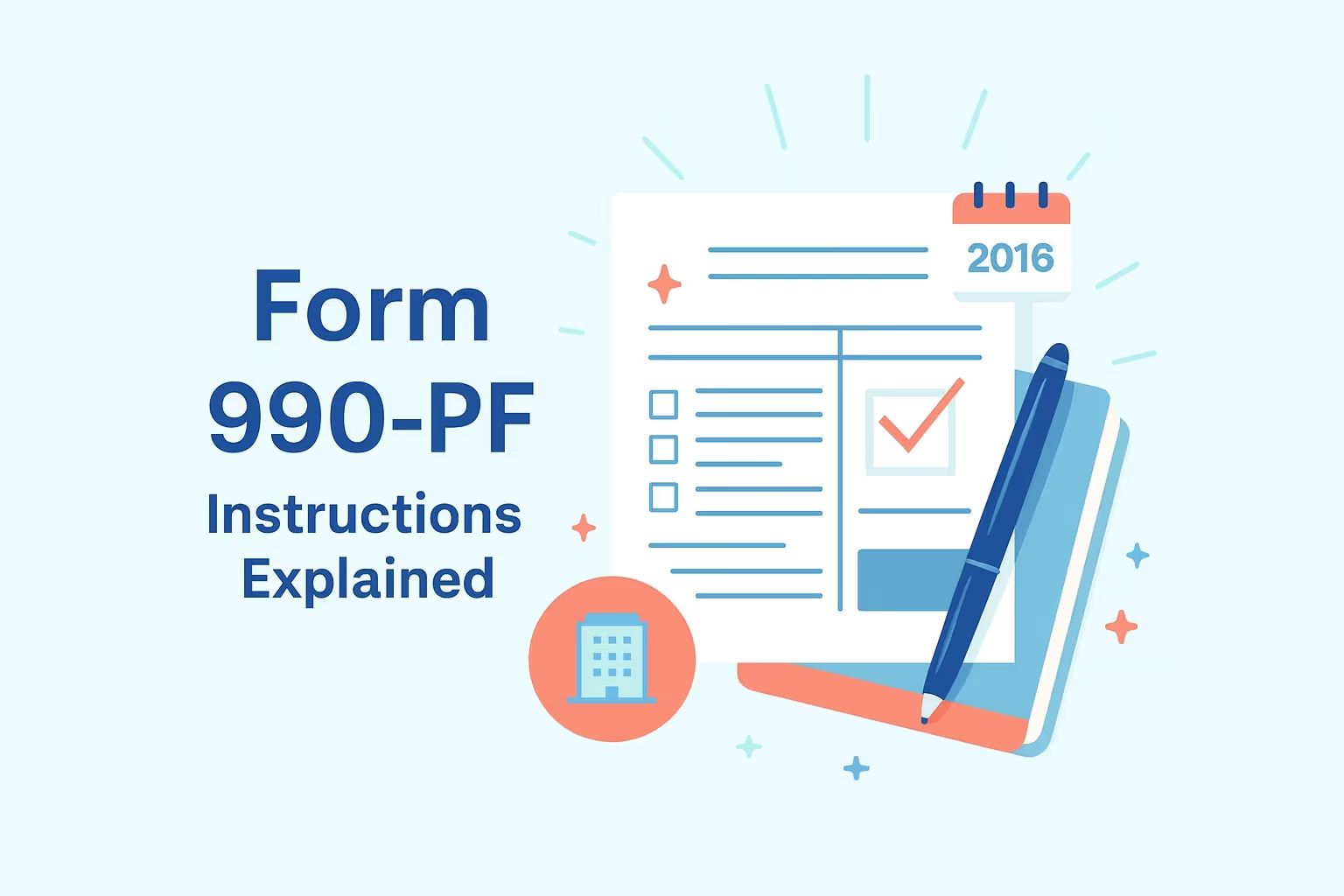
What IRS Form 990-PF (2024) Is For
Form 990-PF is the annual information return required for every private foundation, including exempt private foundations, taxable private foundations, and nonexempt charitable trusts treated as private foundations. The form reports net investment income, excise tax-based calculations, philanthropic distributions, and compliance with minimum investment return rules. It also documents net assets, fund balances, administrative expenses, and financial activity during the organization’s tax year.
When You’d Use Form 990-PF for 2024
You file Form 990-PF when operating a private foundation or when you must claim private foundation status under federal rules. It applies whether filing on a calendar tax year or a fiscal tax year beginning in 2024. Late or amended filings occur when correcting income taxes, reporting additional income generated, updating fund balance changes, or addressing missing information that affects tax liability and excise tax obligations.
Key Rules or Details for 2024
- Excise tax rate: Private foundations calculate a flat excise tax based on net investment income, and this includes interest, dividends, capital gains, and tax-exempt interest reported for the tax year.
- Minimum Payout: Foundations must meet the minimum investment return requirement using the fair market value of their assets, ensuring that qualifying distributions comply with IRS rules and reduce undistributed income.
- Income reporting: Foundations must report capital gain net income, adjusted net income, unrelated business income, and income modifications that affect adjusted gross income.
- Electronic filing: Most organizations are required to file electronically, unless they meet specific exceptions, as the annual information return filing requirements apply to domestic foundations.
- Public disclosure: Filed returns become public, showing net assets, accounts payable, accrued expenses, program-related investments, and other financial instruments.
Browse more tax form instructions and filing guides in our Forms Hub.
Step-by-Step (High Level)
Step 1: Gather all financial records
Collect documents showing investment income, net investment income, gross receipts, gross income, gross sales, and expenses incurred. Include information for temporary cash investments, capital stock, accounts payable, and highly paid employees to ensure accurate preparation of the return.
Step 2: Confirm your accounting method
Verify whether the foundation uses cash or accrual accounting, and ensure that all financial entries are recorded in accordance with this accounting method. This step prevents inconsistent reporting of tax withheld, accrued expenses, or income-producing activities across different sections of the return.
Step 3: Complete identification sections
Enter the employer identification number, organization type, tax year beginning date, and foreign country information if filing for foreign foundations or exempt foreign organizations. Confirm private foundation status and note any substantial contributors.
Step 4: Calculate investment-related taxes
Use fair market values to compute the minimum investment return, net gain, or net capital loss. Complete excise tax-based sections by calculating net income, capital gains, and investment income affecting tax paid amounts.
Step 5: Report charitable distributions
Include direct charitable activities, program-related investments, and qualifying distributions made for charitable purposes. Ensure that you properly report philanthropic distributions and list any grants from foreign countries or other domestic foundations that receive support.
Step 6: Verify assets, liabilities, and fund balances
Enter total net assets, fund balance, retained earnings, temporary cash investments, and fair market value of investments. Include income-producing activities, noncharitable exempt organizations, and other domestic foundations required in asset schedules.
Step 7: File and retain records
Submit the return electronically and retain copies showing all expenses incurred, income taxes, tax-based computations, and private foundation manager signatures. Keep financial records available for public inspection and regulatory review.
Learn more about federal tax filing through our IRS Form Help Center.
Common Mistakes and How to Avoid Them
- Incorrect income reporting: Foundations sometimes misstate investment income or net investment income, but reviewing financial instruments and income generated ensures accurate numbers and prevents IRS adjustments.
- Misclassified distributions: Some organizations incorrectly report charitable purposes, and checking qualifying distributions prevents errors and avoids undistributed income that can trigger penalties.
- Asset valuation errors: Using outdated fair market values can lead to incorrect minimum investment return calculations; however, updating valuations ensures compliance and accurate excise tax results.
- Missing identification details: Failing to provide the employer identification number or supplying an incorrect organization’s tax year can result in processing delays. However, reviewing the identification fields can help prevent missing information.
- Accounting inconsistencies: Switching accounting methods mid-year creates reporting conflicts; however, applying a consistent method avoids unnecessary IRS questions and supports accurate reporting.
Learn more about how to avoid business tax problems in our guide on How to File and Avoid Penalties.
What Happens After You File
The IRS typically processes electronic filings within several weeks, reviewing investment income, tax-based calculations, and qualifying distributions. If the foundation owes tax-paid amounts, the IRS issues notices that include details of tax liability and excise tax. Amendments may be required if administrative expenses or fair market valuations were incorrect, and foundations must keep records for compliance monitoring.
FAQs
How does IRS Form 990-PF 2024 reporting work for private foundations with net assets?
Foundations must list total net assets, fund balances, and retained earnings, ensuring these values align with fair market valuations. These figures influence minimum distribution rules and excise tax calculations.
How should private foundations handle undistributed income for the 2024 filing?
Undistributed income must be calculated carefully, taking into account investment income, net investment income tax rules, and minimum investment return amounts. Late distributions may create additional tax liability.
How is the minimum investment return calculated using fair market value?
The IRS requires the use of the fair market value of investment assets to determine the minimum investment return. This ensures qualifying distributions reduce undistributed amounts properly.
How do temporary cash investments affect Form 990-PF for employer identification number reporting?
Temporary cash investments must be reported as part of the asset schedules and properly connected to the organization’s employer identification number to ensure accurate asset classification.
How do foundation managers ensure tax-based reporting is accurate?
Foundation managers verify investment income, capital gains, and financial instruments to support accurate tax-based calculations. They should review income modifications and fund balance entries before submitting their tax return.
How does fair market reporting apply to exempt status foundations?
Foundations with exempt status must use updated fair market values for all assets, including those of foreign and domestic foundations, to ensure full accuracy in net asset and distribution calculations.
How do retained earnings interact with the organization’s accounting method?
Retained earnings must align with the accounting method used by the foundation, ensuring that gross receipts, accrued expenses, and income-producing activities are consistently reported across schedules.
For more resources on filing or understanding prior-year IRS forms, visit our guide on Nonprofit & Exempt Organization Forms.




























